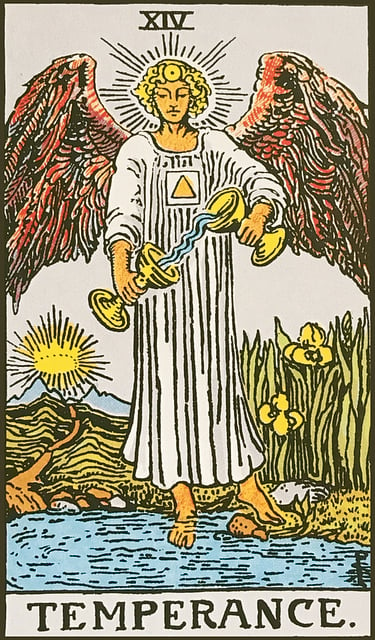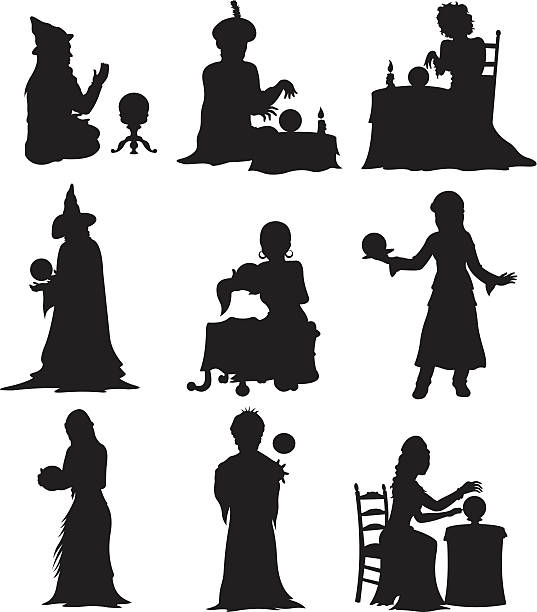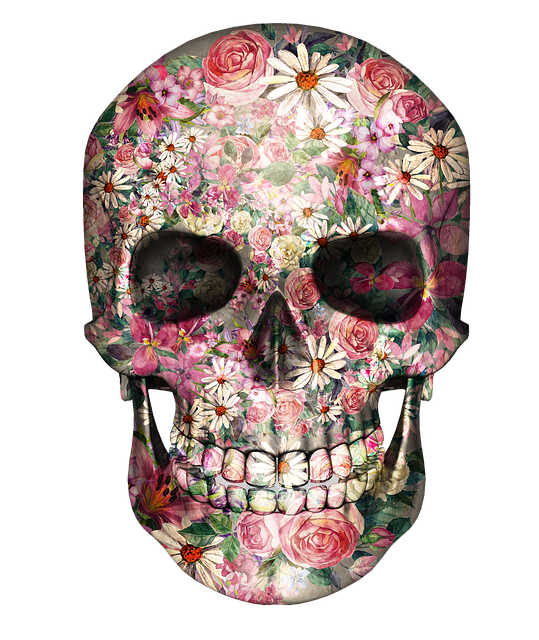Psychic Abilities Across Cultures: A Global Perspective
Psychic Abilities Across Cultures: A Global Perspective
by Irina 09/10/2025

Unveiling the Mystical: Understanding Psychic Abilities Around the World
Throughout history, the exploration of psychic abilities has captivated the human spirit. Cultures across the globe have embraced the idea that some individuals possess a unique intuition that allows them to tap into realms beyond ordinary perception. From the shamans of the Amazon rainforest 🌿 to the seers of ancient Greece, each culture has woven a rich tapestry of beliefs and practices around these extraordinary gifts.
In India, for instance, the practice of Yoga and meditation is deeply intertwined with developing psychic capabilities. Many yogis believe that through disciplined practice, one can unlock the mind's potential to achieve profound insights and awaken higher states of consciousness. 🧘♂️
On the other hand, African traditions often include ancestral spirits who are seen as guides for the living. These spiritual connections form the basis of various psychic practices, which help individuals navigate life's challenges through the wisdom of their forebears. 🌍
Meanwhile, in Japan, the art of Reiki illustrates how psychic energy can be harnessed for healing. Practitioners channel universal life energy to ease physical and emotional pain, demonstrating the profound connection between mental, emotional, and spiritual well-being. ✨
As we journey through diverse cultures, it's clear that regardless of geographical boundaries, the allure of psychic insight remains universal. This chapter encourages you to delve deeper into the unique practices and beliefs that enrich our understanding of psychic phenomena worldwide, revealing how these talents enhance our lives and connect us all. 🌈
From Shamanism to Tarot: Diverse Pathways to Psychic Insight
Throughout history, humanity has always sought deeper understanding of the mysteries that surround us. From the ancient whispers of the shaman in dense forests to the intricate symbols of the tarot deck, diverse pathways toward psychic insight have emerged across cultures. 🌍✨
Shamanism, one of the oldest spiritual practices, connects individuals with nature and the spirit world, allowing them to access vast wisdom and insight. Traditionally, shamans serve as mediators, guiding their communities through rituals that often involve drumming, dancing, and meditation. This intimate connection fosters a profound understanding of the subconscious, leading to valuable insights that aid in personal and collective healing.
In parallel, the art of tarot reading has its roots in mystical practices that date back centuries. Each card, imbued with unique meanings, creates a narrative that can unveil hidden truths about one’s life journey. Just like shamans, tarot readers tap into intuitive energies that transcend the ordinary, bridging the gap between the known and the unknown. 🃏✨
What’s fascinating is how these ancient practices, though different, share a common goal: to awaken our inner truths and guide us toward personal enlightenment. As we delve into the rich diversity of psychic abilities, we uncover not just different techniques, but a universal pursuit of knowledge. Each culture offers a unique lens through which to examine the behaviors of the mind and spirit, reminding us that insight comes in many forms.
So whether you’re drawn to the historic rituals of a shaman or the intricate art of reading tarot cards, remember that the journey toward enlightenment is one of personal exploration and growth. Weaving these cultural threads together enriches our understanding of the mystical, serving as testament to the beauty and complexity of human intuition. 🌟
Intuition in Ancient Cultures: The Roots of Psychic Wisdom
Across the tapestry of human history, intuition has been a guiding force, revered in numerous ancient cultures as a mystical thread connecting the seen and unseen. 🌌 From the shamans of indigenous tribes to the enigmatic oracles of Greece, people have sought to tap into the power of the subconscious, relying on their innate ability to perceive truths beyond the physical realm.
In many societies, this psychic wisdom was not merely celebrated but woven into the fabric of daily life. In Egypt, priests would interpret dreams as messages from the divine, believing that the gods spoke through their subconscious whispers. Similarly, the ancient Chinese culture revered the concept of "Qi," a vital life force found within every individual, guiding them towards harmony and balance.
The Indigenous peoples of North America viewed intuition as a sacred gift, often calling upon their ancestors for guidance through rituals and vision quests. These practices reinforced the belief that our instincts are deeply connected to a *vast network of energy* and ancestral wisdom. 🌍
In the bustling marketplaces of medieval Europe, seers and wise women offered insights that transcended the ordinary, helping individuals navigate the labyrinth of fate with their profound perceptions. 🌠 The art of divination flourished, inviting townsfolk to seek explanations for life's uncertainties, encouraging the integration of intuition into their understanding of the world.
Across continents, the universal concept of intuition resonates—tapping into one’s inner voice has always served as a guiding star, illuminating paths shrouded in doubt. ✨ As we delve deeper into how these traditions have shaped our modern understanding of psychic abilities, it becomes clear that intuition is not merely an individual gift; it’s a cultural inheritance that connects us all.
The tapestry of psychic wisdom is rich and diverse, inviting us to explore the common threads that bind ancient practices with contemporary insights. As we unravel these practices, we rediscover the importance of embracing our own intuitive powers, recognizing that we all have the potential to listen to our inner guides in this mesmerizing journey of life.
Modern Interpretations of Psychic Phenomena: Bridging Tradition and Innovation
From ancient rituals to contemporary practices, the world of psychic phenomena is as diverse as the cultures from which it springs. 🌍 The ancient Egyptians revered *clairvoyance* within their mystical traditions, often using it to guide leaders through divine insights. Meanwhile, in the heart of Asia, practices like *feng shui* weave psychic principles into the very fabric of daily life, emphasizing harmony and balance.
In modern contexts, we find a fascinating blend of *traditional beliefs* and innovative approaches. Many psychics today utilize *technology*, such as apps and online platforms, to reach a broader audience, thus reinventing the delivery of ancient wisdom. This shift is not merely a trend but a significant evolution that showcases how our understanding of *psychic abilities* is expanding.
Western cultures have historically viewed psychic phenomena with skepticism. Yet, contemporary interest is peaking, as people from all walks of life seek to uncover their own *intuitive gifts*. This resurgence reflects a collective yearning for connection, intuition, and the desire to engage with the unseen. ✨
As we journey through these varied interpretations, we uncover a tapestry woven with threads of *spiritual folklore*, *scientific inquiry*, and personal experiences. The dialogue between the ancient wisdom of *tarot cards* and modern psychological approaches reveals how diverse cultures embrace the psychic arts not only as a means of divination but also as a path toward self-discovery and enlightenment.
Ultimately, the bridges built between tradition and innovation foster respect and understanding among different cultures, encouraging us all to explore our own unique psychic potentials. Embrace the mystery, and let it guide you to new realms of awareness! 🌟
Cultural Practices: How Different Societies Honor Psychic Gifts
Throughout history, diverse cultures have embraced psychic abilities, often viewing them as precious gifts intertwined with their spiritual and societal practices. 🌍 From ancient shamans invoking the spirit world to modern-day psychics connecting with loved ones beyond, these practices reflect a deep-seated reverence for the unseen. In Indigenous communities, for instance, visions and dreams are integral. They guide rituals and decision-making, emphasizing the bond between the material and spiritual realms.
In the heart of Eastern philosophies, such as Hinduism and Buddhism, abilities like clairvoyance are viewed as stages of enlightenment. Practitioners cultivate these gifts through meditation and mindfulness, seeking higher consciousness and inner peace. 🌟 This recognition of psychic talents as pathways to spiritual growth illustrates a rich cultural tapestry that honors the mystical.
Similarly, in African cultures, the role of the medium or healer is of utmost respect. They serve as bridges between the living and the ancestors, harnessing intuition and wisdom to provide guidance, healing, and community cohesion. 🔮 Each ritual performed not only affirms their gifts but also strengthens ties within the community.
Western cultures, too, have begun to re-embrace the metaphysical, with practices like tarot reading and astrology now widely accepted as tools for personal insight and growth. As the world becomes more interconnected, the appreciation for these psychic talents transcends borders, inviting us to explore how our differences can unite us in the admiration of the gifts we all share. 🌈
The Language of Symbols: Tarot and Its Global Resonance
Have you ever felt an inexplicable connection to the cards during a tarot reading? 💫 The magic truly lies in its symbols. Each card is a story, filled with rich imagery that resonates with our subconscious mind. In cultures across the globe, symbols play an essential role in understanding our experiences and the universe around us. Whether it's the Fool embarking on a journey or the Death card signifying transformation, these images transcend language and culture, speaking directly to the heart. 🌎
For centuries, various civilizations have embraced tarot’s resonant symbols, interpreting them through distinct lenses based on their unique beliefs and traditions. From the intricate Maya glyphs to the vibrant Chinese oracle bones, each civilization has its own way of decoding the spiritual messages that permeate existence. These symbols serve as bridges, connecting us to deep-rooted collective memories and aspirations. 🙏
As we dive deeper into the practice of tarot, we begin to recognize its universal resonance. Each card’s meaning can shift with context, culture, and personal experience, reflecting our own life's journey. Engaging with tarot is not merely about fortune-telling; it is a profound process of introspection, offering insights that echo through time and space. 🌌 Exploring these symbols fosters a greater understanding of ourselves and the world, illuminating paths to healing and enlightenment. ✨
Psychic Practices: A Journey Through Time and Cultures
Throughout history, the realm of the psychic has captivated the minds and hearts of people across the globe. 🌍 From the ancient shamans of indigenous tribes to the mystical oracle practices of Greece, the art of tapping into the unseen forces has taken many forms, each deeply woven into the fabric of their respective cultures.
In many African tribes, divination is integral to community life, with practitioners using objects like bones or seeds to interpret the messages of ancestors. This sacred connection to the past fosters a sense of belonging and continuity, reminding us that our ancestors still guide and influence our lives.
Meanwhile, in the Eastern traditions, particularly in India, the ancient art of yoga and meditation has often been seen as a pathway to unlock psychic abilities. Here, practitioners believe that by connecting to the universal consciousness, one can access remarkable insights and intuitive strengths. 🧘♀️
Traveling to the heart of Europe, we find the Gypsy tradition that has long been synonymous with fortune-telling. The famous tarot decks that are now beloved worldwide have their roots in centuries-old practices that sought to illuminate future paths and offer profound guidance. ✨
Even in the Far East, the ancient Chinese practice of I Ching invites us to consult the wisdom of the universe through the interpretation of hexagrams. This intricate system encourages individuals to seek clarity through poetic reflections and engaging with the ebb and flow of life.
As we traverse these cultural landscapes, it becomes evident that the longing to understand the hidden layers of existence is a truly universal human experience. Every practitioner, regardless of their cultural background, shares a common goal: to explore the mystical, to connect with the divine, and to enhance their insight into the realms of possibility. 💫
In our next exploration, we will dive deeper into the rituals and practices that have allowed these traditions to flourish and resonate throughout the ages. Each one tells a unique story, a piece of the puzzle in our collective journey through the psychic arts.
Embracing the Unknown: Celebrating Psychic Abilities as a Universal Gift
Throughout history, humanity has been drawn to the mysterious and the unknown. From the ancient oracles of Delphi to the modern-day tarot readers like our very own Irina, psychic abilities are woven into the fabric of cultures across the globe. 🌏✨
In every corner of the world, people have celebrated and nurtured their intuitive talents, whether through dreams, visions, or natural empathy. These gifts serve not just as individual advantages but as a universal connection that binds us all. Imagine a world where listening to your intuition is not only accepted but celebrated as a sacred art! 🎨
For instance, the Indigenous cultures of North America have long revered their shamans, who act as spiritual guides, harnessing their abilities for healing and balance within their communities. Similarly, in Eastern traditions, there is recognition of the subtle energies that link us to each other and the cosmos, emphasizing a holistic view of existence. 🌌
As we delve deeper into the realm of the psychic, we uncover not just practices, but profound philosophies that encourage us to embrace our own unique abilities. It beckons us to see that these gifts are not just for a chosen few but lie within each of us, waiting to be embraced. ❤️
In a world that often thrives on certainty, psychic sensitivities offer a refreshing perspective. They invite us to explore the depths of our consciousness, encouraging curiosity and self-discovery. 🧠💫
Ultimately, the journey of embracing our psychic abilities is about celebrating the beautiful intricacies of the human experience. Just as we honor varied cultures, we should also honor the diverse gifts that each person possesses, recognizing that we are all part of a larger tapestry of existence. 🌈
